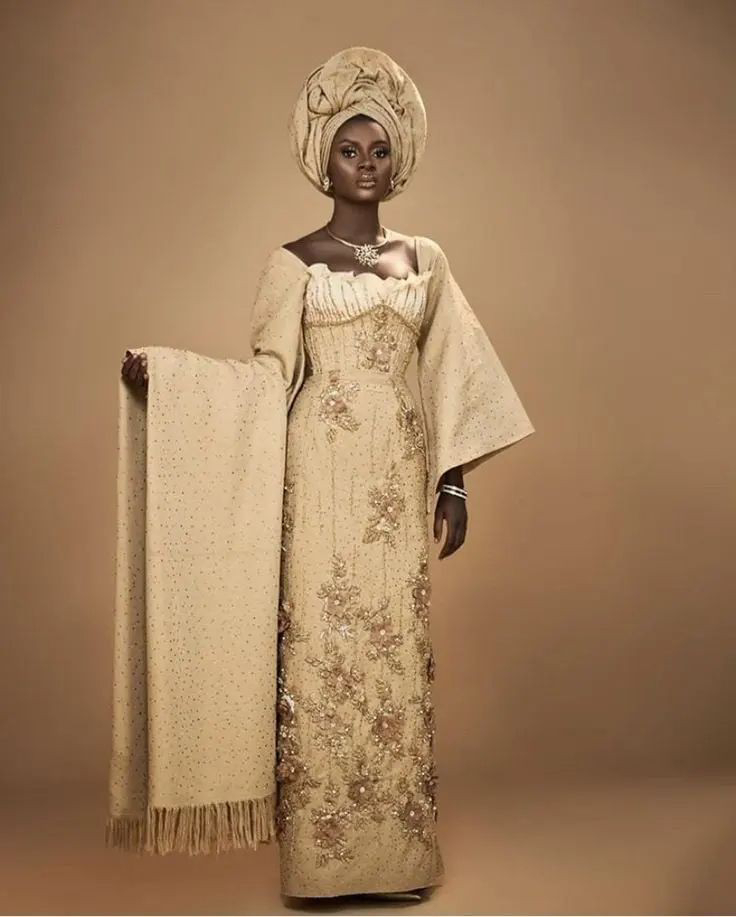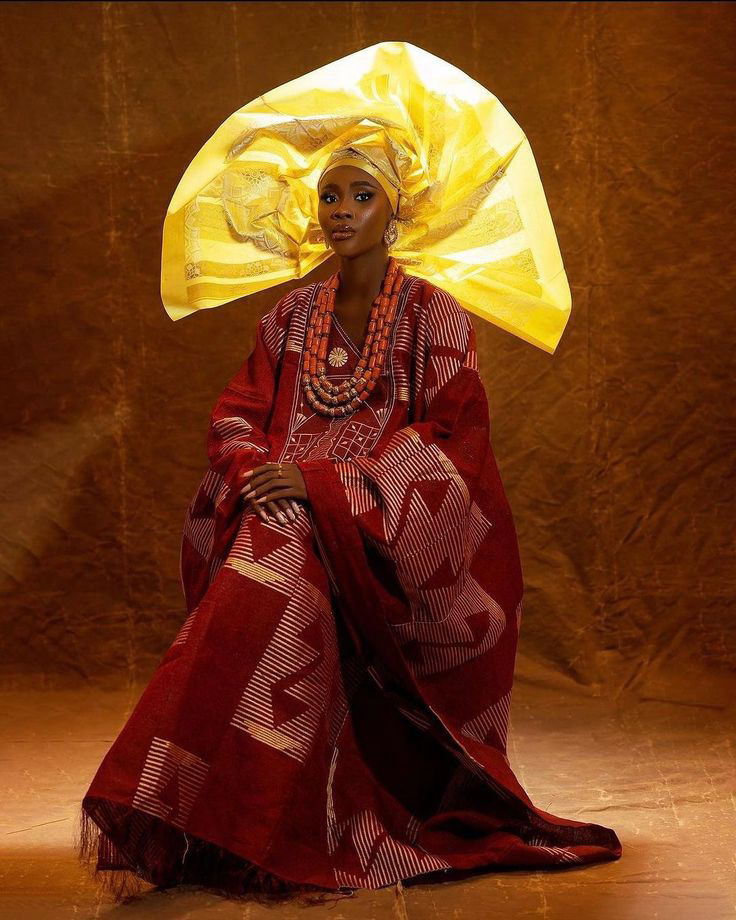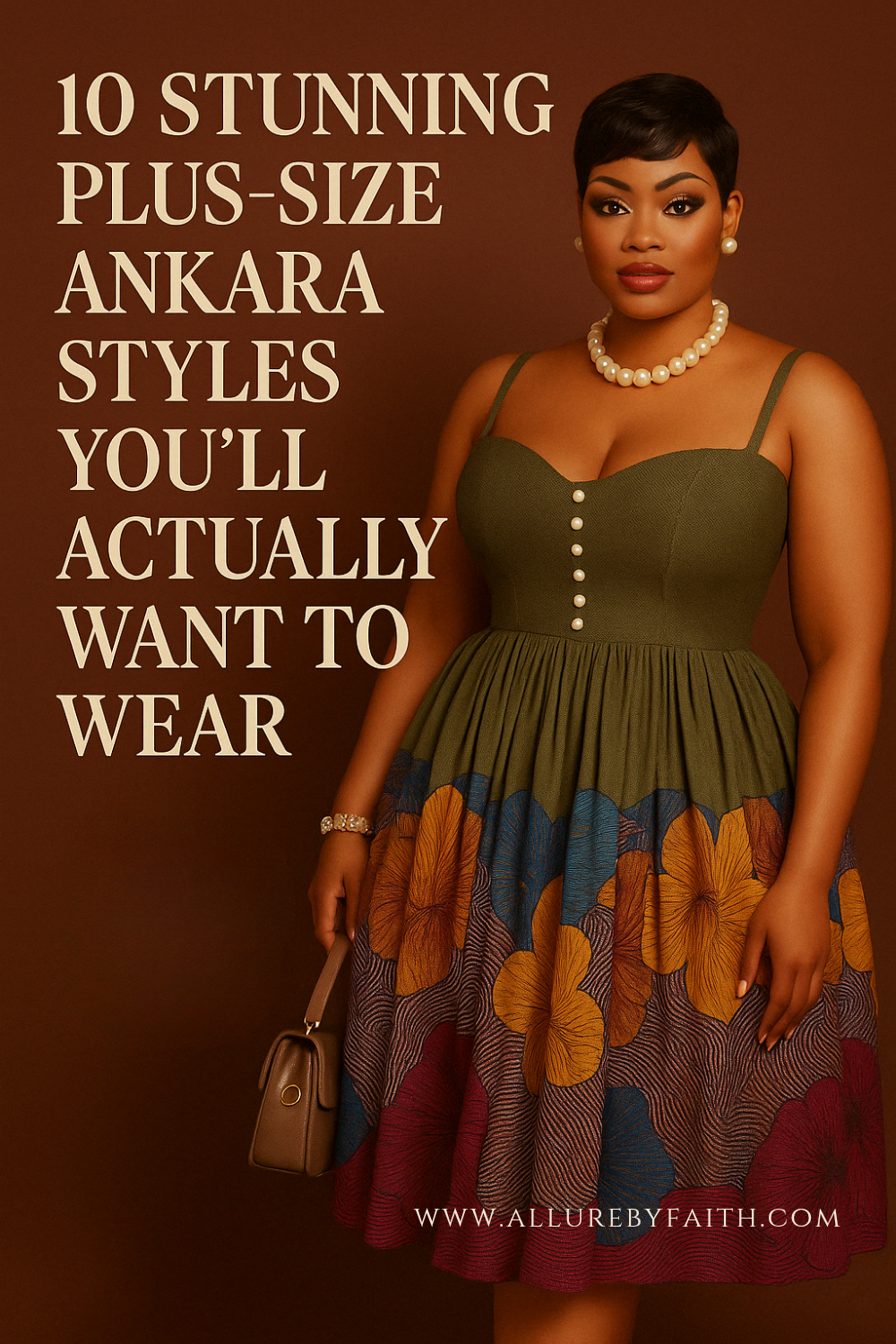Timeless Nigerian Looks that Never Go Out of style
Style is timeless, they say, and I think it goes round and round, like a circle.
Vintage fashion is more than just our past, It's also our present and maybe even our future.
A generation may say that the style of the former generation is old school and start with their own modern style.
When you look deep into the modern style, you'll still find elements of the old style. Why?
That's because vintage fashion is the very foundation of whatever fashion we have today or might have in the future. It evolves, yes, but it never goes away.
It goes round and round and still comes back to its root.
I love vintage fashion, and I know so many people do as well.
Vintage fashion for me feels like it's telling a story, a timeless story.
I love how you are able to have a clue about what your ancestors have worn, how your ancestors looked and all, it's just beautiful.
There are some timeless pieces that I have fallen in love with over the years and some that I have been curious about, and sometimes I mix in these pieces in my current modern designs.
There's just something about vintage fashion that I can't completely put into words.
In today's blog post, I'll be sharing some Nigerian vintage fashion trends that have not gone out of style, they have evolved, yes, but didn't go out of style at all.
Nigerian Timeless Fashion Gallery
1. Iro and Buba
Iro and Buba is number one on my list, this is the Yoruba cultural attire. From my research, I found out that in the olden days, Iro and Buba were not meant for special functions alone, it was the daily wear of women in that time.
The only thing that differentiates the Iro and Buba used in special events like weddings etc, is the material used and how it is styled.
The daily wear for Iro and buba could be made from a less expensive fabric, like the Ankara fabric, a tie-dye fabric, a simple lace fabric, and other kind of less expensive fabrics.
While the Iro and Buba for special functions, are usually made from high end fabrics, like Aso-oke, damask, and high end lace material, and also accompanied by the Famous “Gele” headtie.
Image Source: Instagram @meetimmaIn recent times, I have seen how the Iro and Buba have transformed. These days, people customize their Aso-oke, they bead it, color it and do more things to it.
And sometimes, the Iro and Buba aren't sewn exactly like Iro and Buba, but you can tell that the foundation of the outfit is Iro and Buba.
The Iro and Buba are very versatile, and this makes it a timeless piece in my opinion.
2. Coral Beads
Image Source - Pinterest
If there's one thing that you will find at almost every Nigerian function, that's coral beads.
According to my research, coral beads belong to the Benin Kingdom, A long time ago, the beads were brought into Nigeria, Benin Kingdom, by the Portuguese through trade. The Benins call this bead “Ivie”
Image Source: Pinterest - @vevostudio_So the Benins were the first people to use coral beads in Nigeria to make heavily beaded Regalias for their Obas and Noble men.
Coral beads signify Royalty, Authority and Wealth, and Original Coral beads are very expensive.
Aside from the Benins, other people in Nigeria still use Coral beads, but I learnt that the ones used by the Benins are different from others.
And I believe this, because when you see a Benin king, the Aura and Regalia are just different.
In modern times, Coral beads have evolved and are used by different cultures for different reasons and functions.
And In weddings, it is mostly worn by Couples.
Although the ones worn by Couples aren't the same type as the ones worn by Royalties, it still brings the same Aura and Vibe to the events.
When a couple or anyone wears Coral beads, it changes everything, and takes the outfit quickly from a zero to a hundred!
So Coral beads aren't going anywhere anytime soon, it is here to stay.
3. Wrapper and Lace Blouse
One fashion style that hasn't gone out of style is the two wrapper and Blouse.
Now the origin of this two wrapper and Blouse is not clear, from my research, some say it belongs to the deltans, others say it belongs to the Igbos.
So I'm not sure, but I do know that so many different cultures and tribes in Nigeria wear the two wrapper and Blouse Styles, but it is dominated by the Ijaws, Urhobos, Isokos and the Ukwuani people.
The two wrapper and Blouse Style have evolved and recently into something called the faux wrapper.
These days, women use the faux wrapper style for their weddings and different functions.
It is really beautiful and creative, I have seen stunning styles on the streets of Instagram and I must give these designers their flowers.
One Nigerian fashion designer who's very good at this faux wrapper design is “The Didi Woman”, she's Deltan and her faux wrapper game is top notch.
That being said, most women still use the two wrapper and Blouse Style without any modern changes just like in the olden days.
4. Ankara
Image Source: PinterestThe fourth on my list is the Ankara fabric.
I mean, who doesn't love the beautiful, vibrant, versatile and stunning Ankara fabric?
Ankara was introduced to West Africa by the Dutch.
It was surprising for me when I first learnt this, I really thought it originated in Africa, are you surprised as well? Lol
Since the introduction of the Ankara Fabric to west Africa, it hasn't looked back.
At this point, I can say that Africa has owned it, because when you talk about Ankara fabric, people just immediately think, Africa or Nigeria.
Our mother's used this fabric to make stunning creative outfits, mostly with puff hands, which I think is really cute and those are the foundations for the beautiful Ankara outfits that you see today.
These days you can mix Ankara fabric and tulle, Ankara fabric and satin, Ankara fabric and lace, and much more.
For my designs, I like my Ankara to have a mix of Vintage and Modern touch, it's just something I love a lot, you can check my other blog posts on Ankara.
So my dear, the Ankara fabric is timeless and is here to stay for good.
5. Gele
Image Source : PinterestIt would be an offense to talk about timeless and vintage fashion without talking about “Gele”
I mean, Gele is the headpiece, the crowning glory of all these outfits and it belongs to the Yoruba.
But recently, I would say it belongs to Nigerians, because almost everyone uses the Gele to complement their attire, lol.
From brides to asoebi, to guests, everyone uses the Gele headpiece.
No wedding outfit or event outfit is complete without the Gele. I agree that not everyone likes it, but so many people like it and it just complements the entire outfit.
Image Source: PinterestGele is made from different fabrics like Aso-oke etc.
And it has evolved from what it used to be. In olden days, it was style extravagantly, but in recent times, it has become more like art, which I think is very beautiful.
There are Gele artists that specialize in tying the Gele headpiece, and they do it so well.
Plus there's also Auto Gele, this is when you don't have to go through the tying process, as it has already been tied and styled, you just have to get it and use the handle to tie it onto your head, it's very innovative and beautiful.
So the Gele is here to stay and isn't going anywhere soon.
Conclusion
In my opinion, vintage fashion never goes out of style, it carries history along with it.
It's not just about dressing up and all, It tells a beautiful story of our heritage, culture, tradition and how far we have come.
The elegance you see today in Nigerian fashion, is all thanks to vintage fashion. They set the foundation, just as we are currently setting for the future generation.
So let's all continue to preserve the beauty of our culture and identity, add a touch of Vintage elegance to your wardrobe today, if not for anything, but to honor your ancestors.
All images are not for me, and are only used here for informational purposes. Credit belongs to their respective owners.














Comments
Post a Comment